Why Do Cars Need Electrical Wiring Harnesses? What Are Their Functions?

The wiring harness is an integral component of a vehicle, despite its massive size averaging around 4 meters in length, comprised of tens of thousands of tiny indivisible components. These components include but are not limited to safety airbags, ABS brakes, signal lights, and essential engine parts. The wiring harness undertakes the task of connecting and powering these functions, without which they would fail to operate correctly. Hence, understanding the functions and importance of automotive wiring harnesses is crucial.
What is an automotive wiring harness?
An automotive wiring harness serves as the central nervous system of a vehicle's electrical circuitry; without it, the vehicle's electrical system would not exist. Essentially, a wiring harness comprises contact terminals (connectors) made from copper, crimped onto Wires and cables, encased with insulation or additional metal housing, and bundled together to form the interconnected components of the circuit.
In essence, automotive wiring harnesses assemble cables, connectors, terminals, and wires to transmit power within a vehicle. In the past, vehicles were purely mechanical and could operate without electricity. However, driving a modern car without electricity would be a miracle. Therefore, automotive wiring harnesses are critical components for any vehicle engine. Without them, current cannot reach the various electrical components of the vehicle The ignition systems of cars, such as starters, chassis, and alternators, all require power. Without automotive wiring harnesses to transmit it, they cannot receive this power. However, merely having an automotive wiring harness is not sufficient for a vehicle. The wires and terminals must also be correctly connected to the electrical components. Understanding these connections is essential for understanding the various wiring harness circuits.
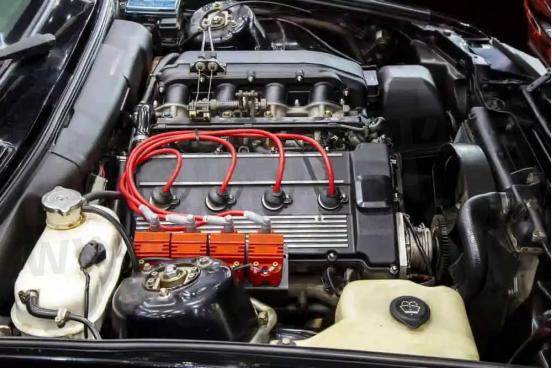
(Modern automobile engines)
Automotive Wiring Harness Circuit
Due to the automotive wiring harness connecting to various electrical components, they possess different connection circuits.These circuits serve different purposes. A typical standard automotive circuit comprises 12:
1. Dashboard illumination lights
2. Gauges
3. Signal lights
4. Heating and air conditioning
5. Horn
6. Parking lights
7. Radio broadcast
8. Brake lights
9. Tail lights
10. Turn signal lights
11. Wipers
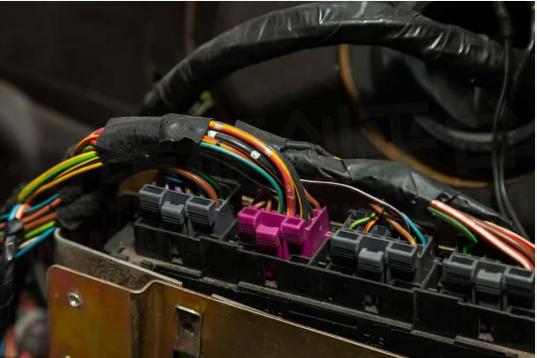
Engine Compartment Lamp
Components of Automotive Wiring Harnesses
In addition to circuits, automotive wiring harnesses also consist of various components, including:
Connectors
As the name suggests, connector components link the wiring harness wires to different circuits and power sources. Typical connectors feature male and female ends, which are joined together to transmit electrical current.However, the type of connectors varies depending on the wiring harness. Their terminals also come in different materials, with brass and copper being the preferable ones.
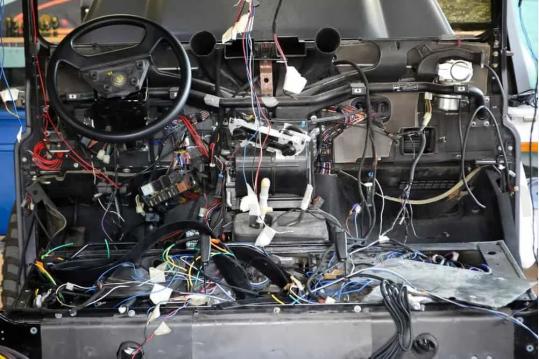
Automotive Cables and Wires
Generally, the function of a fuse is to protect electrical components in the event of a malfunction, such as when the current exceeds a certain level. The characteristic of a wire harness fuse is that the wire easily melts at a certain current level. When it melts, the circuit is disconnected. Thus, it can prevent miscellaneous currents from reaching the vehicle's electrical components, thereby protecting them.
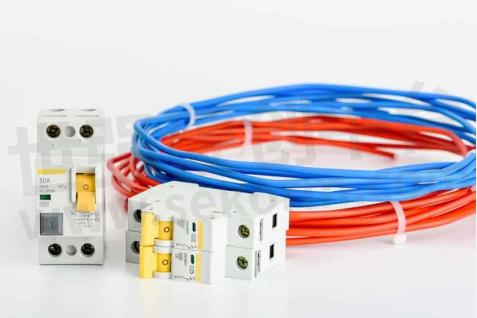
Protecting Electrical Components
Each circuit in the wire harness has its own individual fuse. This means that if one fuse goes bad, it won't affect all components. The fuse box is like a house where you can assemble different fuses inside. It's similar to a distribution board.
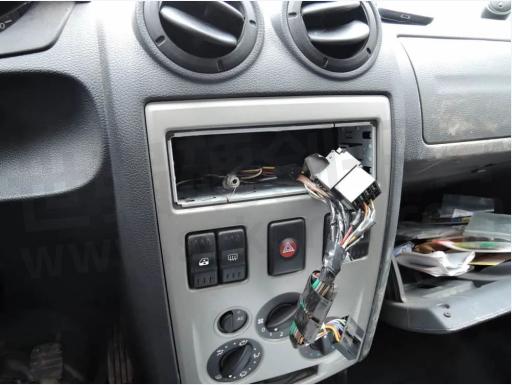
Wiring Harness Behind the Dashboard
Relay components in automotive wiring harnesses are used for high-current circuits. They are one of the most crucial components, directly drawing power from the battery. In contrast, some components draw power from other car system components. Therefore, relay components can handle powerful currents even when derived from low-current sources.
Wires
The harness consists of cables or wires as components. Cables or wires are the components seen here. These are typically copper wires, with various circuit measurement variants.
For instance, circuits like horn and headlamp use 1.5-gauge wire. However, circuits like dome lights and door lights use 0.5-gauge wire. When purchasing wires for circuits, confirming the circuit's current value is essential.
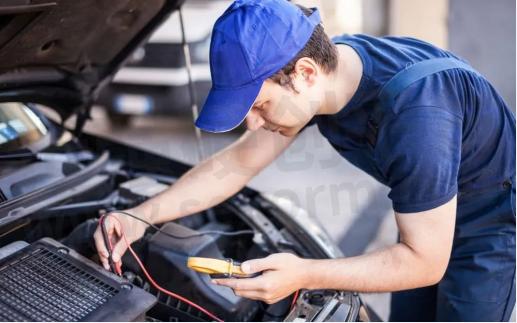
Electrical Inspection by an Automotive Electrician
Advantages of Automotive Wiring Harnesses
Having an automotive wiring harness in a car is better than not having one at all. Here are some benefits they bring:
1. Reduced Likelihood of Short Circuits: With automotive wiring harnesses, the probability of circuit short circuits is lower. Why? Because the harnesses assemble multiple wires into neatly arranged bundles. These bundles, while not flexible, are not loose.
2. Quick Setup: Installing a harness might take a considerable amount of time, involving connecting numerous wires and circuits. However, with automotive wiring harnesses, only one unit needs to be connected, and all wires can function. Besides simplifying setup, you also avoid erroneous connections.
3. Improved Fuel Efficiency: Installing automotive wiring harnesses ensures optimized fuel usage for the vehicle. In the long run, this can save you fuel costs.
4. Enhanced Durability: Cars often endure harsh environments, including extreme cold winters, heavy rainstorms, and heatwaves. Despite such conditions, automotive wiring harnesses continue to function. These harnesses are made from robust materials that are resistant to easy breakage.
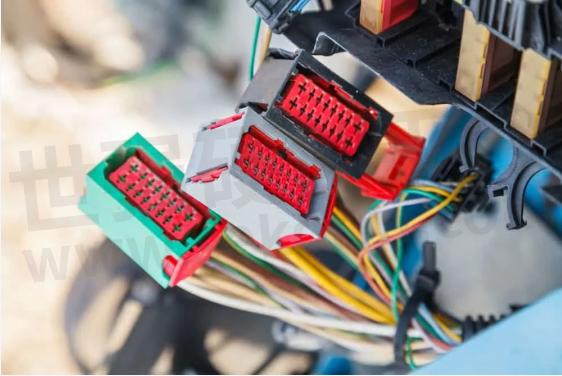
Close-Up of Automotive Electrical System
How to Select the Right Wiring Harness for Your Vehicle
The following tips will be helpful for you:
1. Check the Circuit Connectors: This is the first and most crucial step. As mentioned earlier, standard harnesses come with 12 circuits, but others may have 18 or 24. It's essential to inspect the circuit connectors to ensure they match your vehicle model.
Additionally, examine the connection method. Is crimping or soldering required, or a combination of both? A combination of both offers optimal performance.
2. Verify if the Harness is Expandable: While a vehicle may only require a harness with 12 circuits, what if you have a car that needs 18 circuits? In such cases, you can either purchase a new harness or opt for an expandable one capable of accommodating additional circuits that can be assembled. Expandable harnesses also offer an advantage as they incur minimal voltage loss.
3. Inspect the Harness Material: You want nothing less than a durable harness. To ensure this, check the harness material, especially the wire and connector materials. Copper is the preferred choice for wires. For connectors, you can choose between copper or brass, with aluminum connectors being used cautiously.
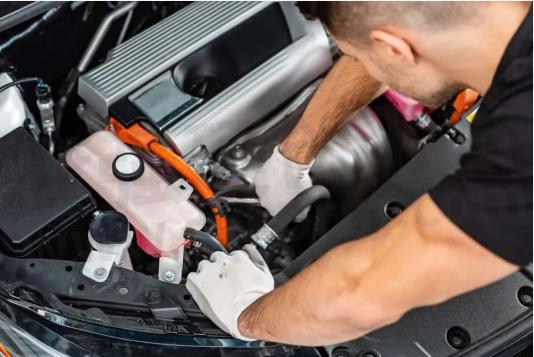
(A mechanic inspecting wiring harnesses)
Conclusion
In summary, the wiring harness in a car serves as a crucial link between the vehicle's electrical system and its various electronic components.It provides power and communication during the operation from one component to another. Without the proper wiring harness, the vehicle's electrical system can encounter numerous issues, including power interruptions, reduced efficiency, and even potential fire hazards if not properly monitored. Regular inspection of the car's wiring harness is essential so that any signs of damage can be detected before more serious problems arise. This ensures a longer lifespan for your wiring harness and helps prevent any unexpected maintenance costs.
- +1 Like
- Add to Favorites
Recommend
- Hosiden Strengthened Sales of MIPI A-PHY-supported Automotive Connectors and Harnesses
- Hosiden‘s Connector-integrated Acceleration Sensor HHM2003-010010 for Automotive Use Supports A2B Digital Communication
- Automotive Chip Provider NOVOSENSE Has Officially Become a Member of Automotive Electronics Council
- Hosiden Developed Automotive Ultracompact Coaxial Connector with Wide-band, High EMC Performance for Automotive Use
- Insulation Failure Analysis of Automotive Connectors
- NOVOSENSE Unveiled Several Groundbreaking Automotive Chip Aiming at Automotive Applications
- MindMotion‘s First Automotive MCU MM32A0144 Has Passed AEC-Q100 Automotive Certification
- Kinghelm Specializes in Customizing Connector Wire Harness Products for Industrial Control, Medical and Automotive Industries
This document is provided by Sekorm Platform for VIP exclusive service. The copyright is owned by Sekorm. Without authorization, any medias, websites or individual are not allowed to reprint. When authorizing the reprint, the link of www.sekorm.com must be indicated.





























































































































































































































































































































































































































































































































































































































































































































































































































































































